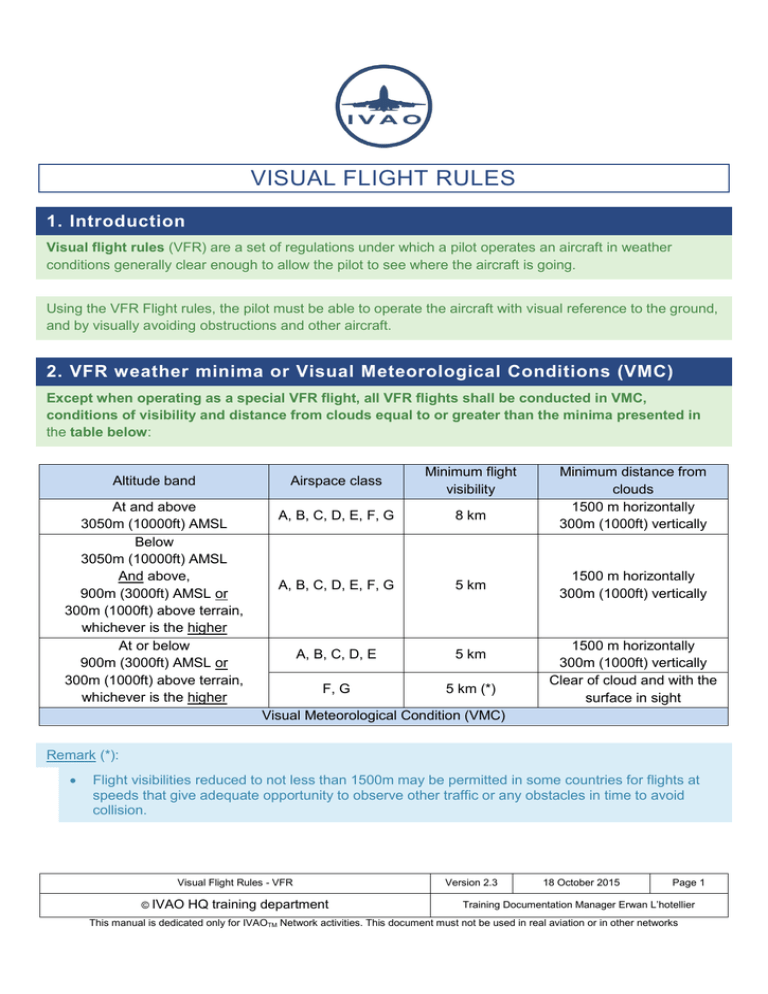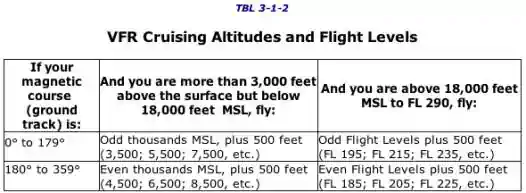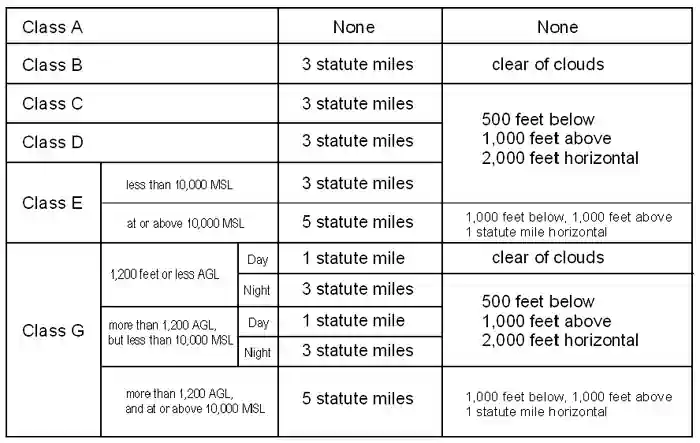class g airspace visibility requirements
Weather Requirements Class G minimum weather requirements exist so that you can see and avoid other aircraft and stay out of the clouds. 135609 VFR ceiling and visibility requirements for Class G airspace.
1200ft or less above the surface regardless of MSL altitude Day.

. To prepare for flying in Class D airspace simply learn what Class D airspace is where it is located what the operational requirements and restrictions are and how to get approval to enter. Related Article Class G Airspace Explained. 1200 or less above the surface regardless of MSL altitude Flight Visibility.
Altitude Range. Although Class G is uncontrolled it is also subject to the most weather restrictions based on where the airspace is located. VFR Minimum Visibility Below 10000 MSL.
There are 6 sets of Class G weather minimums associated with various altitudes during the day or night. Reverts to Class E or G during hours when the tower is closed. If underneath Class B or C airspace Class D.
VFR visibility requirements in class G airspace are 1 mile 16 km by day and 3 miles 5 km by night for altitudes below 10000 feet 3050 m MSL but above 1200 ft AGL. In accordance with FAR 91155. Minimum flight visibility and distance from clouds required for VFR flight are contained in 14.
1200 feet or less above the surface regardless of MSL altitude For aircraft other than helicopters. 1 statute mile visibility and clear of clouds. One mile visibility and clear of clouds is the daytime requirement.
On the other hand Class G airspace has four different sets of altitude-dependent minimums. 1200ft or less above the surface regardless of MSL altitude Day. Above the Class G ground is Class E everywhere else and is controlled airspace.
At night requirements jump to three miles visibility and from merely clear of clouds to 500 feet below 2000 feet horizontal and. In the airspace highlighted below Class E starts at 1200 AGL so Class G automatically starts at the surface and extends to - but doesnt include - 1200 AGL. 500 Below 1000 Above 2000 Horizontal.
Rules governing VFR flight have been adopted to assist the pilot in meeting the responsibility to see and avoid other aircraft. 1 statute mile visibility and clear of clouds. Above 10000ft MSL the requirements are 5 SM visibility and cloud clearance of 1000ft above 1000ft below and 1 SM horizontally.
Night except as provided in 91155 b 3 statute miles. Class G airspace uncontrolled is that portion of airspace that has not been designated as Class A Class B Class C Class D or Class E airspace. Class G Airspace Weather Visibility Requirements Although Class G is uncontrolled it is also subject to the most weather restrictions based on where the airspace is located.
1200 feet or less above the surface regardless of MSL altitude 1 statute mile. 14 rows These minimums cover most Class G airspace but are only valid during the daytime when you are. Sport and recreational aviation activities.
No transponder is required. 10 rows G night 3 statute miles 152 4500 below 41000 above 42000 horizontal G day 1 statute mile. VFR cloud clearance and visibility requirements are the same as Class C.
Daytime requirements for Class G are 1 statute mile visibility and clear of clouds to 1200ft. Class G 1200 feet or less above the surface regardless of MSL altitude. Class E and Class G airspace.
Class G communications. Requirements for a flying in a Class D airspace are relatively minor and obtaining approval to enter is also very simple once you know what to do. Class G Airspace Weather Visibility Requirements.
Flight visibility of 3 statute miles SM Cloud clearance of 1000 above 500 below and 2000 horizontally except for class B which simply requires pilots to remain clear of the clouds. Day - 1 Statute Mile Night - 3 Statute Miles. Establish two-way communication with ATC before entering because it is controlled airspace.
500 Below 1000 Above 2000 Horizontal. You can remember Class G uncontrolled airspace because its just like the good old days at the dawn of aviation. 135-129A 79 FR 41126 July 15 2014 a Unless otherwise specified in the certificate holders operations specifications when conducting VFR helicopter air ambulance operations in Class G airspace the weather minimums in the following table apply.
At night in Class G between 1200 AGL and 10000ft MSL the visibility and cloud clearance are the same as Class CD. 36 rows Notwithstanding the provisions of paragraph a of this section the following. Air defence identification zone.
Above 1200ft stays at 1sm visibility but then for cloud clearance you must be 1000ft above 500ft below and 2000ft horizontal. Class G is completely uncontrolled. VFR Minimum Distance from Clouds Below 10000 MSL.
500 Below 1000 Above 2000 Horizontal 500 Below 1000 Above. For Class B C D and E airspace below an altitude of 10000 MSL the basic VFR weather minimums are. Class D is a single cylindrical area extending from the surface to 2500 feet agl.
Excludes airspace within the given radius except in surrounding Class C or Class B airspace. A Unless otherwise specified in the certificate holders operations specifications when conducting VFR helicopter air ambulance operations in Class G airspace the weather minimums in the following table apply. For aircraft other.
Air Traffic Control Facility. Day except as provided in 91155 b 1 statute mile. Class G airspace is not depicted on any chart.

Sectional Airspace Summary Pilotvintage Aviation Classes Student Pilot Flight Lessons
Regulations Vfr Minimums Learn To Fly Blog Asa Aviation Supplies Academics Inc

Uncontrolled And Controlled Airspace
Maintenance And Aircraft Mechanics Maintenance And Aircraft Mechanics Maintenance And Aircraft Mechanics Hot Air Balloon Hot Air Balloon Hot Air Balloon Aviation Training Handbooks Read Online Aviation Training Handbooks Read Online Aviation

Helicopter Instrument Procedures Part Three

Uncontrolled And Controlled Airspace

4 Airspace Guidelines Scanifly
How To Remember Vfr Weather Minimums Bobbie Lind
How To Remember Vfr Weather Minimums Bobbie Lind
What Is The Purpose Of Different Classifications Of Airspace How Many Classes Of Airspace Are There Quora

Why Are There Mandatory Cloud Clearance Requirements Boldmethod
How To Remember Vfr Weather Minimums Bobbie Lind

Airspace Classes Explained The Ultimate Guide For Beginners

Sectional Chart Airspace Classification Overview Aerial Guide Chart Classification Cardinal Directions



